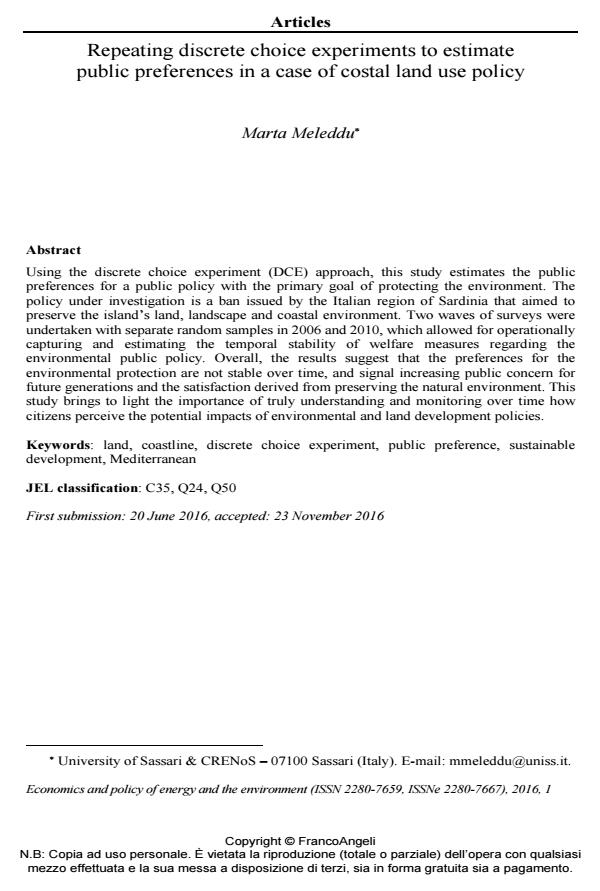Repeating discrete choice experiments to estimate public preferences in a case of costal land use policy
Titolo Rivista ECONOMICS AND POLICY OF ENERGY AND THE ENVIRONMENT
Autori/Curatori Marta Meleddu
Anno di pubblicazione 2017 Fascicolo 2016/1
Lingua Inglese Numero pagine 26 P. 47-72 Dimensione file 966 KB
DOI 10.3280/EFE2016-001003
Il DOI è il codice a barre della proprietà intellettuale: per saperne di più
clicca qui
Qui sotto puoi vedere in anteprima la prima pagina di questo articolo.
Se questo articolo ti interessa, lo puoi acquistare (e scaricare in formato pdf) seguendo le facili indicazioni per acquistare il download credit. Acquista Download Credits per scaricare questo Articolo in formato PDF

FrancoAngeli è membro della Publishers International Linking Association, Inc (PILA)associazione indipendente e non profit per facilitare (attraverso i servizi tecnologici implementati da CrossRef.org) l’accesso degli studiosi ai contenuti digitali nelle pubblicazioni professionali e scientifiche
Using the discrete choice experiment (DCE) approach, this study estimates the public preferences for a public policy with the primary goal of protecting the environment. The policy under investigation is a ban issued by the Italian region of Sardinia that aimed to preserve the island’s land, landscape and coastal environment. Two waves of surveys were undertaken with separate random samples in 2006 and 2010, which allowed for operationally capturing and estimating the temporal stability of welfare measures regarding the environmental public policy. Overall, the results suggest that the preferences for the environmental protection are not stable over time, and signal increasing public concern for future generations and the satisfaction derived from preserving the natural environment. This study brings to light the importance of truly understanding and monitoring over time how citizens perceive the potential impacts of environmental and land development policies.
Parole chiave:Land, coastline, discrete choice experiment, public preference, sustainable development, Mediterranean
Marta Meleddu, Repeating discrete choice experiments to estimate public preferences in a case of costal land use policy in "ECONOMICS AND POLICY OF ENERGY AND THE ENVIRONMENT" 1/2016, pp 47-72, DOI: 10.3280/EFE2016-001003